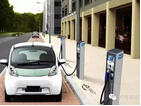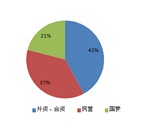Power batteries determine the future of new energy vehicles, and the development of power batteries depends on the energy density of the batteries. Due to the consideration of cruising range, the new energy automobile industry urgently needs batteries with high energy density to enter the practical application stage.
To this end, all countries in the world have developed a power battery development plan. At present, many enterprises in the market have begun to make a big move in the field of solid-state lithium batteries. The latest news, the UK OXIS Energy Company has announced that it has successfully developed a lithium-sulfur battery with an energy density of 425Wh/kg. Currently, the battery is introduced into the HAPS high-altitude satellite. The company's goal is to achieve energy density by the end of 2019. It reaches 500Wh/kg.

The energy density of the battery pack using this technology is 300Wh/kg, and OXIS's goal is to increase the number to 400Wh/kg by the end of 2019. This technology battery pack is mainly used in the field of large unmanned aerial vehicles. If you need to be equipped on a pure electric car in the future, there are still some problems to be solved, including cycle life, power output, and charging time. However, OXIS has already received a LiSFAB-funded project to provide performance in terms of battery life and cycle life. Once there is a breakthrough, the battery energy density of the vehicle may be greatly improved in the future.
BMW has also formally established a new partnership with Battery Technology. The two companies will jointly develop solid-state battery technology for electric vehicles. At present, a battery made of inorganic materials has been developed. This battery technology can achieve higher than lithium ion. The higher energy density of the battery means greater energy and longer life in the same size and volume. Compared with traditional liquid-based batteries, this technology also has advantages in terms of safety, service life and use environment, but it takes a lot of work to turn this new technology into a large-scale commercial application stage.
In the domestic research and development of battery technology, in general, it is not inferior to foreign countries. According to the internal person in charge, in the case of maintaining the current battery pack volume and the power consumption per 100 kilometers per ton, the single charge can not only last for 620 kilometers. At the same time, it can also reduce the cost, extend the battery life, and solve the big difference between the current performance of electric vehicles and traditional fuel vehicles.
The orientation of China's policy for the improvement of energy density in the lithium battery industry has been clarified. The "Made in China 2025" promulgated by the Ministry of Industry and Information Technology states: "By 2025 and 2030, the energy density of China's power battery cells must reach 400Wh/kg and 500Wh/kg respectively. Directly linked to energy density and continuously raise the threshold, it is expected that the market growth rate will reach 50% in the next three years, and the market share will continue to concentrate on the dominant enterprises.
With the help of the policy, there is no doubt that battery range is the next vent of new energy vehicles.
















 RCCN WeChat QrCode
RCCN WeChat QrCode Mobile WebSite
Mobile WebSite







